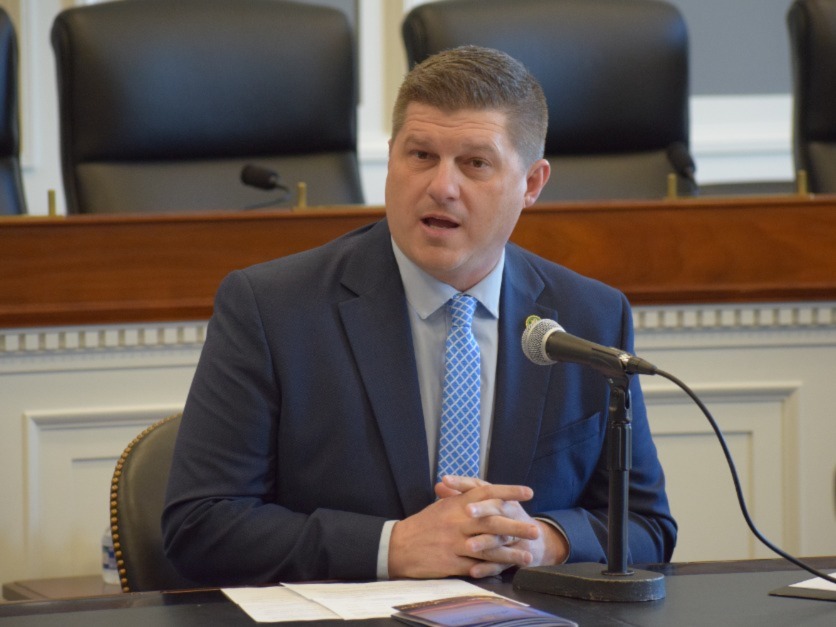The leader of USDA’s Natural Resources Conservation Service expressed confidence that the agency could hire the staff it needs to handle a sharp increase in climate-related funding, despite many applicants for soil conservationist positions lacking a key job requirement — a class in soil science.
The agency has received 1,500 applications for 200 openings for soil conservationists around the country, although it’s not clear how many will meet all the requirements.
NRCS Chief Terry Cosby told a House Agriculture subcommittee that many colleges and universities are no longer offering the required soils class because they lack the funding and laboratories.
“As we hire soil conservationists, the soils course is the limiting factor for folks coming out of college. A lot of universities do not offer that course any longer,” Cosby said.
He told Rep. Abigail Spanberger, D-Va., that the colleges and universities don’t realize that dropping the course hurt their graduates’ job prospects.
Soil science “is the basis of everything that we do at NRCS. It is a foundational course that I think everyone in agriculture should have.”
He said the agency can hire employees without the soils requirement, but they will still have to take the course.
NRCS, which currently has 11,600 employees, needs to hire about 1,000 every year just to compensate for expected attrition, Cosby said.
The new staff will be important to NRCS’ ability to deliver $17 billion in new funding for conservation programs that was provided by the Inflation Reduction Act as well as assist with the $3 billion in projects funded by the Partnerships for Climate-Smart Commodities initiative.
Farm Service Agency Administrator Zach Ducheneaux has a different challenge when it comes to hiring FSA county staff. There is a “stigma in this country about the reality of public service,” he told the lawmakers.
“We should look at these folks as the forefront of essential programs and services to our rural communities to give them the lifeblood they need for economic opportunities,” Ducheneaux said.
“We all need to get together to start to brag on our county staff the way the secretary and I do, instead of treating them like they're part of something that’s inefficient and a bureaucracy, which frankly isn’t true,” Ducheneaux said, referring to Agriculture Secretary Tom Vilsack.
Cosby optimistic about using RCPP funding
The Congressional Budget Office has estimated that USDA will only be able to spend $15.3 billion of the $17 billion in IRA funding, largely because of the department’s historic difficulty in approving projects funded through the Regional Conservation Partnerships Program.
“In this drought and climate crisis and this influx of funding from the IRA, we cannot meet the moment if government is slow and works inefficiently,” Rep. Gabe Vasquez, D-N.M., told Cosby. Vasquez noted one project in his state that was abandoned because of delays and cited another instance where farmers were told they would have to wait five to six years for funding for a project needed for flood control.
Cosby, however, assured the lawmakers that changes the agency has made to program rules would ensure that projects are funded more quickly.
The program modifications include reducing the number of required agreements, providing consistent guidance and training to agency staff, and streamlining the reimbursement process for project participants.
Don’t miss a beat! It’s easy to sign up for a FREE month of Agri-Pulse news! For the latest on what’s happening in Washington, D.C. and around the country in agriculture, just click here.
NRCS announced last week that it is taking applications for $500 million in RCPP funding. Cosby told Agri-Pulse after the hearing he was confident all of the money would be obligated by Sept. 30, the end of the 2023 budget year, “and then over the next two or three years, those farmers will be able to implement those practices.”
The IRA allocated $754 million for RCPP in FY24, another $1.4 billion in FY25, and then $2.3 billion in FY26.
 Rep. Brad Finstad, R-Minn.
Rep. Brad Finstad, R-Minn.Ducheneaux defends CRP payments
Subcommittee member Brad Finstad, R-Minn., told Ducheneaux that Conservation Reserve Program payment rates were higher than they should be and making it hard for farmers to find additional cropland. Increasing program payments as the Biden administration did in 2021 in a bid to boost CRP enrollment “incentivizes farm country to take high-quality land out of production,” Finstad said.
Young farmers in particular say high CRP rates have essentially “forced them to compete with the federal government” for land, Finstad said.
But Ducheneaux said CRP incentives “give the producers a meaningful choice” about what to do with their land. He said FSA was looking at refining its use of an erodibility index to more precisely evaluate land that is being offered for enrollment.
“The choice that they (landowners) make with their resources is not for us to dictate. Our job is to get the opportunity out there in front of them, so that they make the best choice,” Ducheneaux said.
Ducheneaux later told Agri-Pulse that landowners have applied to enroll 1.18 million acres in CRP under this year’s general sign-up process. An additional sign-up for CRP’s grasslands component ends Friday.
About 23 million acres are currently enrolled in the program, including 8.4 million in general sign-up, which is aimed at larger tracts; 8.2 million in continuous sign-up, which is focused on smaller, more environmentally sensitive tracts, and 6.4 million in the grasslands option. Two million acres enrolled through the general or continuous sign-up options are scheduled to leave the program in October unless they are re-enrolled.
Annual CRP enrollment is capped at 27 million acres under the 2018 farm bill.
For more news, go to Agri-Pulse.com.


